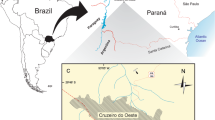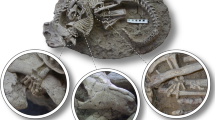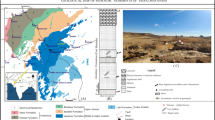Abstract
MR. C. W. HOBLEY'S interesting article in NATURE of April 18 (p. 573) ought to carry conviction as to the importance of the small collecting expedition. which has been organised by the Trustees of the British Museum. In a short note published in this journal a year ago (March 8, 1924, p. 361) Gigantosaurus (or Tornieria), the main object of this expedition, was referred to in a manner which seems to be almost playful. The animal which is described as having “more slender limbs” than the American Diplodocus is a giant of stupendous size, possessing a humerus seven feet long, in its massiveness by no means suggestive of a creature of graceful or slender build. Without further qualification the description scarcely does justice to this wonderful animal.
This is a preview of subscription content, access via your institution
Access options
Subscribe to this journal
Receive 51 print issues and online access
$199.00 per year
only $3.90 per issue
Buy this article
- Purchase on Springer Link
- Instant access to full article PDF
Prices may be subject to local taxes which are calculated during checkout
Similar content being viewed by others
Author information
Authors and Affiliations
Rights and permissions
About this article
Cite this article
HARMER, S. The Dinosaur Region in Tanganyika Territory. Nature 115, 638–639 (1925). https://doi.org/10.1038/115638c0
Issue Date:
DOI: https://doi.org/10.1038/115638c0
Comments
By submitting a comment you agree to abide by our Terms and Community Guidelines. If you find something abusive or that does not comply with our terms or guidelines please flag it as inappropriate.



